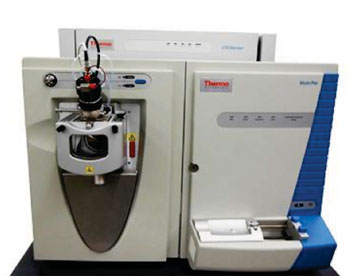Plasma Mannose Levels May Indicate Diabetes Risk
By LabMedica International staff writers
Posted on 14 Jul 2016
Obesity is associated with an increased risk for a wide range of morbidities, including insulin resistance (IR), type 2 diabetes (T2D), non-alcoholic fatty liver disease (NAFLD), and cardiovascular disease (CVD).Posted on 14 Jul 2016
Although the prevalence of obesity continues to dramatically increase worldwide, a clear understanding of the underlying molecular mechanisms involved in the progression of associated disorders is still lacking, but has recently been investigated.

Image: The Thermo-Finnigan LTQ mass spectrometer (Photo courtesy of Thermo Fisher Scientific).
An international team of scientists led by those at the KTH-Royal Institute of Technology (Stockholm, Sweden) used a systems biology-based approach and generated cell-specific integrated networks for liver, fat and muscle tissues. They generated cell-specific integrated networks (INs) by merging genome-scale metabolic, transcriptional regulatory and protein-protein interaction networks. They performed genome-wide transcriptomics analysis to determine the global gene expression changes in the liver and three adipose tissues from obese subjects undergoing bariatric surgery and integrated these data into the cell-specific INs.
A total of 48 samples from the four tissue types of the obese subjects were sequenced using HiSeq 2000 and HiSeq 2500 systems (Illumina, San Diego, CA, USA). Measurement of plasma levels of glucose, mannose, fructose, amino acids, and a-hydroxybutyrate (AHB) was performed using a liquid chromatography-tandem mass spectrometry (LC-MS/MS) platform, based on a ACQUITY ultraperformance liquid chromatography system (UPLC, Waters Corporation, Milford, MA, USA) and a Thermo-Finnigan LTQ mass spectrometer (Thermo Fisher Scientific, Waltham, MA, USA) operated at nominal mass resolution, which was equipped with an electrospray ionization (ESI) source and a linear ion trap (LIT) mass analyzer.
The scientists found significantly high correlations between glucose and mannose and observed a significantly positive correlation between the plasma mannose levels and body mass index (BMI) and a significantly negative correlation between the plasma mannose levels and insulin sensitivity. They found that subjects with high mannose levels have a higher risk for type 2 diabetes (T2D) and that mannose can be used as a biomarker since blood mannose levels are quite stable and not influenced by recent food intake, unlike glucose levels.
Adil Mardinoglu, PhD, a senior author of the study said, “We can measure mannose in the blood of lean or obese people and identify if they have increased risk for type 2 diabetes based on their mannose levels.” The study was published on June 23, 2016, in the journal Cell Metabolism.
Related Links:
KTH-Royal Institute of Technology
Illumina
Waters
Thermo Fisher Scientific













